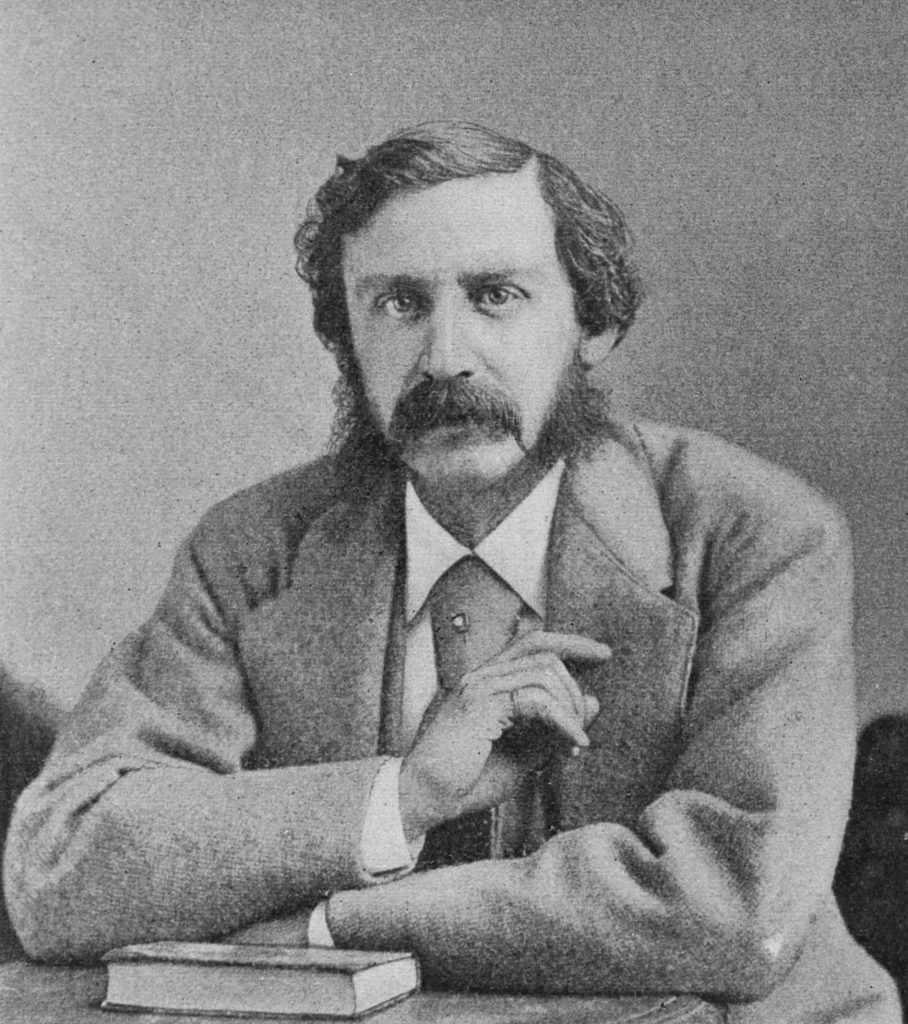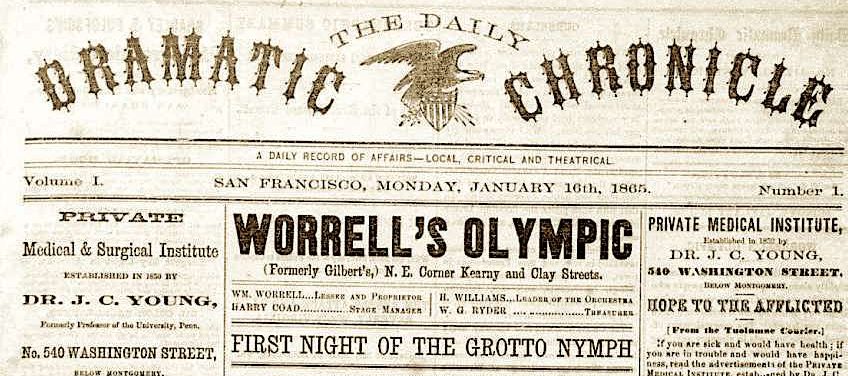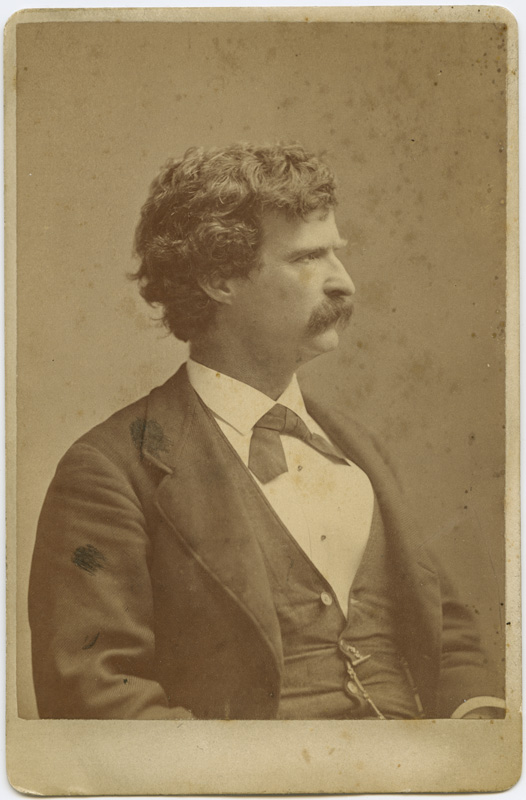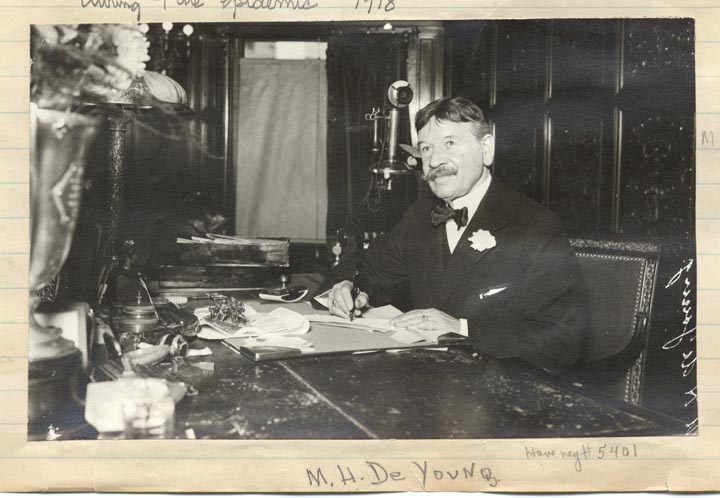In what they themselves describe as a “dingy room at 417 Clay Street,” two teenagers – Charles de Young, 19, and his 17-year-old brother Michael – use a $20 gold piece borrowed from their landlord to bankroll the printing of several hundred 9 inch by 15 inch sheets designed to look like a playbill. By doing so, they found the San Francisco Chronicle on January 16, 1865.
Says Charles de Young in the inaugural edition – as quoted by the Chronicle in its own 1879 history of itself:
“We make our politest bow to the public, with one hand upon the left side of our blue-and-green plaid waistcoat, one foot being gracefully thrown forward in the operatic, managerial style, and our glistening new sombrero held negligently resting upon our left hip-bone. We incline smilingly toward our friends, the public, and announce, our prospective intentions with regard to The Daily Dramatic Chronicle, asking them to take the tiller of our future into their own hands, knowing as we do that with such pilots the favoring breeze of success will fill our sails and give us a clear sea.
“We shall do our utmost to enlighten mankind in esse and San Franciscans in posse of the actions, intentions, sayings, doings, movements, successes, failures, oddities, peculiarities and speculations of us poor mortals here below.”
The new Dramatic Chronicle has no subscribers. The de Young’s business plan is to distribute their publication free and profit from the advertising. The plan works. The publication is heavy on advertising with snippets of theater news as filler.
The first issue does, however, cover the death of U.S. Senator and orator Edward Everett, who two years earlier had given a more than two hour speech at Gettysburg immediately before Abraham Lincoln’s two-minute remarks. Bret Harte and Mark Twain contribute items to the newspaper. Says Twain in an October 19, 1865 letter to his brother, Orion: “The Dramatic Chronicle pays me $. Or rather will begin to pay me, next week — $40 a month for dramatic criticisms. Same wages I got on the Call, & more agreeable & less laborious work.” While neither Harte nor Twain have bylines, Twain scholars are confident he is the author of a number of 1865 and early 1866 items in the Dramatic Chronicle — particularly the jabs at Albert Evans, a rival reporter at the San Francisco Alta who writes under the pen name of Fitz Smythe. A representative zinger from the Dramatic Chronicle’s October 26, 1865 edition:

“The Mathematical Fitz Smythe, of the Alta, says in his paper that ‘the Colorado arrived from Panama after the quick passage of twelve days and twenty-four hours.’ That mode of expressing oneself in a solemn, religious paper like the Alta is extremely reprehensible. It is dreadfully well calculated to deceive — for who notices the odd hours? and who don’t notice the round numbers and give the steamer credit for a twelve-day trip? Fitz Smythe, you won’t do! Fitz Smythe, the atmosphere of the Police Court is destroying your religious principles! Fitz Smythe, beware! You will be a moral Augean Stable the first thing you know, Fitz Smythe! And in that case, there will be no Hercules found in these days equal to the job of shoveling you out! First class in mathematics, stand up: Armand Leonidas Fitz Smythe, how many days do twelve days and twenty-four hours make?”
On April 15, the Dramatic Chronicle scoops every one of the city’s other newspapers, of which there are more than a few. After putting out that morning’s issue, Michael de Young visits the local telegraph office and is told by the manager that President Lincoln has been assassinated. He shows de Young the dispatch as proof. In his June 16, 1999 story, “134 Years of the Chronicle,” Staff Writer Carl Nolte describes what happens next:
“(de Young) memorized the dispatch, ran back to the paper and he and his brother got out an extra. The other papers, which had taken the rest of the morning off, were badly beaten — some of them literally.
“Mobs ran through the streets attacking the offices of newspapers that had savagely ridiculed the late president. The Dramatic Chronicle got out more extras describing this, too.”
Circulation – and revenue – climbs. The de Youngs decide to broaden their newspaper’s scope. On September 1, 1868, they premiere the Morning Chronicle, saying it will be “bright, bold, fearless and truly independent.”
And the rest is history – summarized by Carl Nolte in the remainder of his 1999 story.


